|
How Influence and SEO Can Drive Customer Experience
https://ift.tt/2UV7tVf
We talk a lot here on Online Marketing Blog about influencer marketing and one of the benefits of incorporating the voices of influencers in brand content is not often covered: customer experience. What’s the connection between CX and influence? A big part of customer experience is trust and many customers simply do not trust brands or advertising. That’s where adding credible 3rd party voices to brand content comes into play. Brands that want to deliver the most relevant, engaging and actionable experience for their customers will often incorporate external experts that already have the attention of the audience that brands want to reach. Partnering with relevant influencers to co-create content can open doors for brands trying to engage hard to reach and increasingly skeptical audiences. Those content collaborations can also help deliver an experience that is more credible and trusted than brand content alone. Of course, simply including influencer quotes in brand content is not enough. In order to optimize brand content to be more trusted, influencer contributions must be genuine, authentic, and ultimately impactful. The starting point for influencer collaboration success begins with brands identifying specific topics of influence. Those topics need to be aligned with what customers care about so that when the brand identifies and engages with influencers on those topics, they are authentic to customer interests. Influencers that understand firsthand what buyer goals, pain and interests are in the context of solutions the brand offers can be critical for content collaboration that is genuine and impactful. Another part of influencer and brand authenticity is disclosure. If the influencer has been compensated in any way, they need to disclose the relationship as sponsored or as an advertisement. If the content is relevant and engaging, the disclosure will not be a distraction. Boosting the credibility of B2B content with influence can be complemented with making sure that content is findable. That is where the intersection of SEO and influence come into play. Search engines like Google have realized long ago that delivering the best search experience correlates with successful advertising engagement. That means the left side organic results and ads alike need to be the best answer for customers. For brands, delivering a great user experience in search means understanding searcher intent and providing content that meets those expectations at the very moment of need. Modern SEO best practices do exactly that: provide highly specific, useful information that is relevant to the purpose of the customer in solving their problem or meeting their need. For optimal SEO performance, those best answer content experiences should be delivered with relevant, fast loading pages that are mobile friendly and deemed credible by other websites that link to them. Even better, is when that content is optimized for trust with relevant 3rd party experts. Effective Content Marketing is about delivering useful information where, when and in the formats that are most meaningful to buyers. Optimizing content for effective discovery, consumption and action according to buyer preferences relies on insights for each of those outcomes. How buyers discover solution content, their preferences for content format, device and topic and the triggers that will motivate action are all insights that can lead to corresponding metrics such as Attract, Engage, and Convert. For example: While the marketing world is focused on the many obvious approaches to improving customer experience, those that understand the value of content that is optimized for findability and credibility will realize even greater benefits. via Online Marketing Blog - TopRank® https://ift.tt/2wiHYzh March 4, 2020 at 05:32PM
Record Influencer Spending, Google's Gmail Shopping Ads, Pinterest's Verified Merchant Program, & Twitter Engagement Stats
https://ift.tt/37qD4R9
Facebook Adds ‘One-Time Notification’ API to Messenger for Business Twitter says ad tech and product updates will improve direct response advertising Top Twitter Stats for 2020 [Infographic] Facebook Is Killing Off Its Web Supply In Audience Network – And Don’t Be Surprised If It All Shuts Down Pinterest shares surge as revenue, user adds beat estimates New Research Shows Facebook Still Holds Sway With Millennials and Gen Z [Infographic]
Google is Expanding Shopping Ads to Gmail 56% of marketers think AI will negatively impact branding in 2020, study says Instagram Adds New Listings of ‘Least Interacted With’ and ‘Most Shown in Feed’ in Following Tab US Online Media Spend in 2019 and the Outlook for 2020 ON THE LIGHTER SIDE:
A lighthearted look at 7 types of LinkedIn requests by Marketoonist Tom Fishburne — Marketoonist The 10 Best Super Bowl Ads of 2020 — Adweek TOPRANK MARKETING & CLIENTS IN THE NEWS:
Do you have your own top B2B content marketing or digital advertising stories from the past week? Please let us know in the comments below. Thank you for taking the time to join us, and we hope you will return again next week for another selection of the most relevant B2B and digital marketing industry news. In the meantime, you can follow us at @toprank on Twitter for even more timely daily news. Also, don’t miss the full video summary on our TopRank Marketing TV YouTube Channel. via Online Marketing Blog - TopRank® https://ift.tt/2wiHYzh February 19, 2020 at 04:08PM
Social Media Use by the Fastest-Growing US Companies
https://ift.tt/2SE52ES The fastest-growing companies in the United States are using social media to achieve a wide range of goals, including to brand build and to generate sales, according to recent research published by The Center for Marketing Research, University of Massachusetts, Dartmouth. The report was based on analysis of the social media accounts of the top 500 companies on the 2019 Inc. 5000 list (a ranking of the fastest-growing privately held companies in the US). The researchers also interviewed executives at 109 companies on the list. Some 94% of the executives interviewed say social media is effective in building brand awareness for their firm, and 84% say social media is effective in generating sales/leads (up from 80% in the previous year's edition of the report).
Top Social Networks SLP Marketing via MarketingProfs https://ift.tt/2i6d74N February 19, 2020 at 04:07PM
24 Essential B2B Influencer Marketing Statistics
https://ift.tt/2SGvj5r
How important is influencer marketing to businesses in 2020? Influencer marketing will see global brand spending of up to $15 billion by 2022 (Business Insider Intelligence), and B2B marketers who haven’t yet experienced its many benefits now have more research data than ever to make the case for starting an influencer marketing program. Even if you’ve already developed an influencer marketing strategy, the wealth of new information coming out about its power to build trust and inspire action is growing, which is why we wanted to share 24 significant B2B influencer marketing statistics that combine to tell a compelling story that will alter your future campaigns. Let’s jump right in with a look at some of the latest influencer marketing statistics. Making The Statistical Case For B2B Influencer MarketingIt Makes Financial SenseAmong B2B buyers the type of influencer content with the most value is the venerable case study. 47 percent of B2B buyers found case studies to be the most valuable type of influencer content, ahead of webinars at 39 percent, third-party or analyst reports at 35 percent, and user reviews and video content, each at 32 percent, according to survey data from Demand Gen Report published by MarketingCharts as shown below.
Influencer marketing has also delivered impressive value, beginning in 2018 when analyst data showed that each dollar spent for influencer marketing yielded $5.20 return in media value.
From that point forward influencer spending increased, as in 2019 it saw the highest growth of all online channels, reaching some $2.6 billion in the U.S. alone, and a growth rate of a whopping 70.5 percent year-over-year, according to report data from Winterberry Group published by MarketingCharts.
The same forecast predicts $3.4 billion for influencer spending in 2020 in the U.S. alone. It Builds Trust & Credibility“Partnering with relevant influencers to co-create content can open doors for brands trying to engage hard to reach and increasingly skeptical audiences.” @LeeOdden Click To TweetThe recent Edelman Trust Barometer report placed influencer trust above that from delivered from brands. 63 percent of survey respondents said that they trust influencers more than what a brand says about itself.
A compelling case for influencer marketing in the B2B world also comes from the aforementioned MarketingCharts B2B buyer survey, which found that 95 percent of B2B marketers say they prefer credible content from industry influencers. Separate survey data from Demand Gen Report of senior level marketers, also published by MarketingCharts, revealed that 65 percent of B2B buyers said their consumption habits have changed to prefer credible content from industry influencers. When done well, influencer marketing builds levels of trust that exceed traditional campaign methods, however consumers need to feel confidence in the influencers they follow. 82 percent of U.S. consumers believe that influencers should disclose their history of personal use of a product or service. (Influence.co) Consumers are also wary of influencers who post too frequently. The same survey found that 74 percent of consumers say they would sever ties with influencers who post too often, a statistic savvy B2B influencer marketers take into account. It’s Being Rapidly Adopted For Good ReasonIn several 2019 surveys influencer marketing was cited as one of the top marketing trends expected to have a sizable impact in 2020, a prediction that during the first two months of the year has materialized according to initial influencer marketing spending figures that we’ll examine. By the end of 2019 survey data forecast that influencer marketing adoption among B2B tech marketers was expected to expand by 31 percent from 2018 implementation levels, a prediction that now appears on the conservative side as influencer marketing has continued to swiftly evolve. At our client SAP’s annual conference, a group of only 15 influencers drove 25 percent of all social media impressions, which our CEO Lee Odden explores in more detail in a recent article examining how even a small number of influencers experiencing a brand event can make a big impact, with “25 B2B Influencer Marketing Campaign & Engagement Ideas for 2020.” Another positive signal for the growth of influencer marketing is that 21 percent of marketers plan to make influencer posts the focus of their 2020 social media strategy, according to Social Media Today poll data.
Additionally, 88 percent of consumers have found purchasing inspiration from viewing influencer content. (Rakuten 2019 global influencer marketing survey.) It Spans Global Boundaries & GenerationsThe global nature of online advertising has proven to mesh well with influencer marketing, as nearly 70 percent of consumers follow at least one influencer from a country not their own (Rakuten), which plays especially well in the hands of B2B businesses that often include multinational units. Globally during 2019 some 59 percent of marketers said their budget for influencers has increased, while 39 percent of brands in the U.S. say they would be encouraged to invest even more in influencer marketing programs if they were better able to see the impact it has in the broader scope of the customer purchasing journey, the same survey noted. “Influencer marketing for B2B offers impressive options to optimize marketing performance across the entire customer lifecycle.” — Lee Odden @LeeOdden Click To TweetImplementation of influencer marketing has grown not only among pure B2B marketers, but also in the marcomm sector. 67 percent of global marcomm professionals now see influencer marketing within their scope, according to recent data from Talkwalker and MarketingCharts. Influencer marketing’s power has been seen not only in its global scale, but also its multi-generational pull, as 18 percent of Gen Z consumers say they discover brands via influencers (GlobalWebIndex).
When an influencer recommends a product, 51 percent of Millennials say they are more likely to try it, according to survey data from Valassis and Kantar. Influencer Marketing & Social PlatformsWhen it comes to the under-10,000-follower micro-influencer niche, Instagram is the clear top social media platform of choice at 75.9 percent, according to recent survey data, which offers a look at the top social network choices among micro-influencers. We recently published a list of “31 DIY Marketing Tools To Create Remarkable Experiences,” which includes some of the tools used most frequently by micro-influencers to create content targeting Instagram. Instagram, YouTube, Facebook, blogs, Twitter, and LinkedIn (client) top one recent list of most popular social media platforms for influencer marketing. 89 percent of marketers said that Instagram was important for their influencer marketing strategy. (Fourstarzz Media)
How Do I Begin An Influencer Marketing Program?Finding the ideal influencers for your audience is a challenge most marketers consider significant, as 51 percent of marketers have reported difficulty finding the right influencers. (Visme.)
At TopRank Marketing we’ve specialized in influencer marketing for years now, and were named by Forrester as the only B2B marketing agency offering influencer marketing as a top capability in its “B2B Marketing Agencies, North America, Q1 2019” report.” To help you along your influencer marketing journey, including suggestions for finding the right influencers for your particular audience, here are five articles we’ve written that dig in to the nuances of the process:
Learn More From TopRank Marketing Online & In Person
Statistics tell an important story that can help direct B2B marketers along a data-and-research-based journey. No matter how revealing statistics may be, however, they don’t tell the entire story, as the human elements are what drive real progress in successful influencer marketing programs. “Stories are just data with a soul.” @BreneBrown Click To TweetB2B marketing’s use of influencer marketing to bring a human touch is the focus of a Break Free B2B video interview we held with our client LinkedIn’s Marketing Manager Judy Tian. You can learn more about how B2B marketers are benefiting from influencer marketing, whether it’s through building better customer experiences (CX) or building trust, by attending one or all of the speaking events our CEO Lee Odden has lined up in the coming months, which are listed below. February 24-25, 2020 – B2BMX – Scottsdale, AZ March 19, 2020 – Convergence Summit – Minneapolis, MN March 24, 2020 – Pubcon – Miami, FL April 20-22, 2020 – Content Tech – San Diego, CA April 22-23, 2020 – Content Marketing Conference – Boston, MA May 27 -28, 2020 – B2B Ignite USA – Chicago, IL via Online Marketing Blog - TopRank® https://ift.tt/2wiHYzh February 19, 2020 at 04:06PM
10 Top B2B SEO Trends & Predictions for 2020
https://ift.tt/36LlebT
It’s that time of year, B2B marketers. We’re tying up loose ends. We’re reflecting on a year’s worth of wins, opportunities, and change. And we’re working hard to finalize next year’s marketing plans and budgets so we can hit the ground running after the clock strikes midnight on New Year’s Day. 2019 was a wild year for search, keeping SEOs and marketers on their toes. Multiple mobile-first indexing updates were implemented by Google. New best practices were released for structured data. Automated podcast transcription and playability within Google SERPs became a reality. And the list goes on. As we say goodbye to another year and decade of massive changes, we asked our SEO-savvy friends to join us in sharing trends to watch and predictions for what 2020 will bring to the world of search. What topped the list? From voice search and IoT to intent research and structured data—it’s clear that the future of search is more user-focused than ever before: Providing the best answer, in the best format, wherever and whenever a query is made. TopRank’s Take: SEO in 2020Competition for organic search visibility will continue to grow and be a focus for marketers in 2020. But while smart and balanced on-page SEO tactics will remain a must, as content continues to proliferate and search engine algorithms advance, expansion, integration, and creating better experiences will be critical ingredients for success. #1 – A Focus on Credible Content to Create Best-Answer Experiences
Content optimization for improved search visibility is no longer enough. Not for Google, not for brands and certainly not for buyers looking for the best answer to their questions. Content in 2020 must be more than relevant and helpful. It needs to be credible and serve as part of an experience that differentiates those brands that deserve top visibility and those that lag. To do that, marketers will need to elevate their skills at optimizing content for findability, credibility, and experience. When marketers see more strategically how SEO can integrate with content marketing and influencer marketing to create a better customer experience, everybody wins. Content in 2020 must be more than relevant and helpful. It needs to be credible and serve as part of an experience that differentiates those brands that deserve top visibility and those that lag. @leeodden Click To Tweet#2 – Brands Go Off-Page to Build Awareness and Authority
We see competition for organic visibility growing fiercer. While smart and balanced on-page SEO tactics will remain a must, as content continues to proliferate and search engine algorithms advance, expansion and integration will be critical. What does this mean? Creating high-quality content that’s optimized for the modern searcher (and algorithms) is the minimum. But with brand building and demand generation— especially for the growing portfolio of B2B tech brands, being paramount—I predict SEO will become more ingrained in B2B brand building initiatives. More specifically, I predict we’ll see a rise in brands leveraging off-page factors to increase brand awareness and build authority, with link building—especially around unlinked brand mentions—becoming a pivotal focus area. I predict SEO will become more ingrained in brand building initiatives. More specifically, I predict we’ll see a rise in brands leveraging off-page factors to increase brand awareness and build authority. @Tiffani_Allen Click To TweetExperts’ Top SEO Predictions and Trends to Watch in 2020#3 – Delivering Anytime, Anywhere Thanks to Voice Search and IoT Devices
I’m still gung-ho about voice search. It is super exciting to see the advancements there—also the smart displays for voice assistants, that is going to be a lot of fun. Looking back at how much easier it is to do voice queries now, and how my kids even do it, it’s becoming so natural for people. We are on the verge of this really exploding and it’s grown so much, so fast already. I’m also watching the growth of search with embedded devices, not just from voice appliances and smart displays, but even more: in your cars, refrigerators, ovens, your clock or speakers, etc. Heck, integrating all of that with your light switches and internet of things (IoT) devices, it’s super exciting to watch. We also have video features in YouTube and beyond, audio features with podcasts, and even image features with 3D and augmented reality (AR) images. There’s also Bing’s move to get publishers to push content and to see if Google will expand their indexing API. In summary, search has come so far in understanding natural queries via voice. In 2020, we’ll be able to show search results anywhere and anytime—and I’m looking forward to that. Search has come so far in understanding natural queries via voice. In 2020, we’ll be able to show search results anywhere and anytime—and I’m looking forward to that. @rustybrick Click To Tweet#4 – Closing the Gap Between SEO and Brand
It’ll become increasingly important to close the gap between SEO and brand. SEO experts will need to get better at collaborating with other teams to build integrated strategies, which work to improve the product-market fit. If you’re not a good fit for the consumer, it won’t matter how many links you have, or how perfect your website is. Google’s intent was never to show a list of links, but rather, to provide the best solution for a user. If you’re not trying to be or become that solution, you’re not even going to show up. Google's intent was never to show a list of links, but rather, to provide the best solution for a user. If you're not trying to be or become that solution, you're not even going to show up. @jonalderson Click To Tweet#5 – Raising the Stakes for Mobile SERP Visibility
A few SEO trends that I expect for 2020 are:
#6 – Creating Content for Search Intent by Topic, Rather Than Individual Keywords
From an SEO-perspective, I see 2020 having a large focus on improving content creation by focusing on holistic topics instead of just singular keywords. This will force content to utilize more natural language that satisfies a user’s question instead of filling the page with fluff and marketing jargon. As Google continues to update its algorithm with updates like BERT, this focus will become even more important. I see 2020 having a large focus on improving content creation by focusing on holistic topics instead of just singular keywords. @jesseseogeek Click To Tweet#7 – Automation = Freedom
My prediction for SEO in 2020 is that automated SEO insights will become more accessible, freeing us up to work on higher level thinking and strategy. In addition, incorporating QA markup and crafting content around intent and SERP features will continue to be important. My prediction for SEO in 2020 is that automated SEO insights will become more accessible, freeing us up to work on higher level thinking and strategy. @BritneyMuller Click To Tweet#8 – SEO + CRO + Unique Brand Story = A Winning Combination
First, more convergence of SEO and CRO--this trend will be driven by three factors:
Second, brand stories will become more important. Most brands are copycats of each other. When it’s difficult to distinguish between brands, users will have very little brand loyalty. With Google changing the rules as it wishes, establishing a unique brand that attracts visitors away regardless to search becomes essential. Third, we will see more SEO testing. A/B (split) testing is popular in experimentation programs, but it has not gained much traction amongst SEOs. Split testing site structure/content to see which version of the site generates more traffic is still in its infancy; however, it will gain more popularity as Google relies more on artificial intelligence (AI). I see three major SEO trends in 2020: 1) More convergence of SEO and CRO, 2) Increased importance of brand stories, 3) A rise in SEO testing. @ayat Click To Tweet#9 – Semantic Markup and Schema Will Become Overpowering
The Google Webmaster Conference in Zurich left me with a couple very useful insights into 2020. The first is that Google intends to increase the amount of schema that they support. In fact, I predict semantic markup and schema will become overpowering in 2020--whether you are optimizing content, images or events--every SEO will need to understand schema and (I hope) use tools like inLinks to help make that happen. My second prediction is that Google will start to extend their “rel=” attribute in links. They currently support rel=nofollow, rel=ugc, and rel=sponsored, but my prediction is that this will be the start of Google trying to get more information from links. I might be wrong--but what is crystal ball gazing for? I predict semantic markup and schema will become overpowering in 2020—whether you are optimizing content, images or events—every SEO will need to understand schema. @Dixon_Jones Click To Tweet#10 – Moving from Keyword Research to Intent Research
BERT is just the tip of the iceberg on what is coming in terms of a better understanding of user intent. I foresee many SEOs moving away from traditional keyword research and doing more “intent research”. What are the yet unfulfilled intentions that clients can address with new engaging content? While BERT helps a lot with understanding natural language, GPT2--a natural language generation algorithm--helps with generating compelling content. I anticipate new Google and Bing guidelines to clarify good and bad uses of this type of powerful content generation technology. Many companies will race to scale their content efforts and produce business value. Chrome is going to start shaming slow sites next year. You can expect page speed to be a big priority like HTTPS was for the last two years. BERT is just the tip of the iceberg on what is coming in terms of a better understanding of user intent. I foresee many SEOs moving away from traditional keyword research and doing more ‘intent research’. @hamletbatista Click To TweetCheers to a New Decade of SEOBig changes are ahead, which is cause for both celebration and critical thinking. A renewed and consistent focus on providing best-answer content, advancements in how we can automate day-to-day tasks, and the concept of voice search for the whole home could mean huge changes in the way SEOs and marketers interact with their teams, and the way consumers interact with brands. If you’re unsure where to start in 2020, it can help to start with getting the lay of the land. For help, check out my tips for optimizing your B2B content performance with an SEO audit. What are you SEO predictions for 2020? What SEO trends do you have your eye on? Tell us in the comments section below or tweet us at @toprank. via Online Marketing Blog - TopRank® https://ift.tt/2wiHYzh December 17, 2019 at 02:46PM 12/17/2019 Boost Open Rates With Messaging Apps
Boost Open Rates With Messaging Apps
https://ift.tt/34wCyzN Compared with "tradigital" forms of marketing, such as email, messaging apps tend to enjoy far greater open rates, with many consumers finding them more attention-grabbing than emails. Which is understandable: an email flood daily overtakes recipients' inboxes with marketing messages. Consumers are overwhelmed, and very often outright delete emails without ever opening them. Now consider that by their very nature app notifications are more prevalent and apparent on the home screens of mobile devices than emails typically would be; as a result, notifications garner attention. An infographic from Cadoo, a provider of SMS and push messaging services in Ireland, explores the question of engagement and messaging apps—their benefits for marketers, case studies, and five tips for boosting open rates. Find marketing how-tos relevant to you in our resource library. Check out the infographic for the details:  SLP Marketing via MarketingProfs https://ift.tt/2i6d74N December 17, 2019 at 02:44PM
Adapting to Changes in Marketing and the CMO Role
https://ift.tt/2M6lUR1 The role of marketing has undoubtedly evolved, as has the customer experience. Signing on the dotted line is now just the beginning. Businesses that understand that tomorrow's customers care more about the journey will come out on top. As a result, chief marketing officers (CMOs) are forced to have an entirely new set of skills in their toolkit—namely, the ability to wear many hats at once. It's about acting as a chief financial officer (CFO) to be strategic about when and where to invest marketing dollars for optimum ROI, acting as a product developer to ensure the solution matches the customers' evolving technical needs, and integrating sales expertise to ensure marketing is driving leads through the funnel. So let's break down this evolution... Find marketing how-tos relevant to you in our resource library. CMOs of companies of all sizes are now, more than ever, directly responsible not only for revenue but also for their contribution to profitability. At the beginning of any planning period, every dollar requested by the CMO for Marketing's budget needs to be justified to the CFO/CEO, and every dollar spent needs to be accounted for. But once the budget is approved, the CMO and Marketing's performance will ultimately be assessed on a hard ROI metric by the end of the stated time period, usually 3, 6, or 12 months. Until recently, that assessment was based on a series of volume metrics, such as number of event attendees or number of website visitors, and a choice of cost metrics, such as cost per lead (CPL) and cost per acquisition (CPA). But with increasing adoption of deep analytics and data visualization technologies, the most progressive businesses assess marketing's performance on the revenue-based metric of customer lifetime value (LTV) divided by the customer acquisition costs (CAC), or LTV:CAC. To calculate the total cost of acquiring a customer (CAC), all expenses need to be considered, including digital marketing, content marketing and SEO, content creation, event management, media relations, influencer marketing, creative services, website development and maintenance, personnel, and other vendor costs. Anything in excess of 2-3X for the LTV:CAC calculation is fairly healthy; and, if that rate is sustainable, the CMO can breathe easily. The hard part now for CMOs is truly understanding where to invest precious Marketing dollars for the best ROI. The good news is, as with every profession and school of thought, there are guiding principles with which to navigate... 1. Know your customer The best CMOs first ask the simple, but fundamental questions: Who are our customers? How do they buy? Why do they want to buy from us? The answers to those questions will help define the foundations of the most effective CMOs—a deep understanding of the ideal customer journey, by type of customer. With such knowledge, the CMO and the marketing team can make more informed decisions on whom to target, with what content, in what form, how often, and in what sequence. A customer journey can range from the very simple and linear to the highly sophisticated and multilayered. When versioned by customer segment and type, the entire exercise can get complicated. 2. Choose the right tech There are literally thousands of technology providers servicing every aspect of the marketing function. They include paid search and advertising, media relations, and content management systems; marketing automation platforms; customer journey analytics... the list goes on. Choosing the right combination of technologies is critical to the CMO's success and the task of delivering ROI results to the rest of the C-suite. Having a deep understanding of many of these technologies, and the often only slight differences in their functionality, is a must. One wrong decision can be costly: Many technology vendors require minimum-term or multiyear contracts, and unwanted costs will very quickly eat into positive ROI. 3. Assemble a team of athletes Marketing as a functional area is the decathlon of business; no other area in a company has such diversity in skillsets, running the gamut from the highly analytical (left brain) to the ultra-creative (right brain). CMOs must have a deep working knowledge of an ever expanding range of disciplines or be schooled enough to intelligently and effectively direct and help those responsible on the marketing team. The key is to hire the right people for every role. People are a CMO's most valuable asset. Hiring the wrong person can, again, cripple the effectiveness of the marketing organization, and it can be a very costly mistake. Hire only when you are 100% sure that the person has the level of expertise that is required for a role. The level of expertise required can vary depending on the go-to-market (GTM) strategy. For example, if PR is a critical part of the overall strategy, hiring a highly skilled and seasoned media relations expert is key. If a business is highly reliant on its website as a source of demand, then having a deep technical and creative team is preferred. Whatever the goal, be sure to align your people resource with the marketing strategy, and hire only the best talent you can attract. 4. Craft your GTM playbook Defining how to go to market involves making critical decisions about target market segments, ideal customer profiles and personas, partnerships, branding, campaigns, advertising (online and out-of-home), messaging, and timing and sequencing of activities. Those decisions are not just the purview of the CMO. All those responsible for the commercial success of the business—CEO, sales and support leaders, product development and engineering leaders, and the heads of business development and partnering—have a role to play in determining the GTM plan for the business. It is imperative that everyone be aligned around common GTM goals and objectives for a business to reach its revenue goals and beat the competition. Those need to be documented and revisited periodically during a formal operations review process to make sure the business is on track, and to change course if needed. 5. Integrate with other departments In addition to generating revenue and positive ROI on investment dollars, CMOs also act as a service provider for many internal business functions:
Marketing is the hub for the customer journey, and it is imperative that the CMO integrate and have transparency into other vital functions to ensure a successful end-to-end relationship. * * * Today, CMOs have the shortest tenure in the C-suite, so those who want to survive and thrive must attack the position in a new, evolved way to ensure a successful customer journey, business growth, and career longevity. SLP Marketing via MarketingProfs https://ift.tt/2i6d74N December 17, 2019 at 02:44PM |
AuthorWrite something about yourself. No need to be fancy, just an overview. Archives
March 2020
Categories |

 RSS Feed
RSS Feed

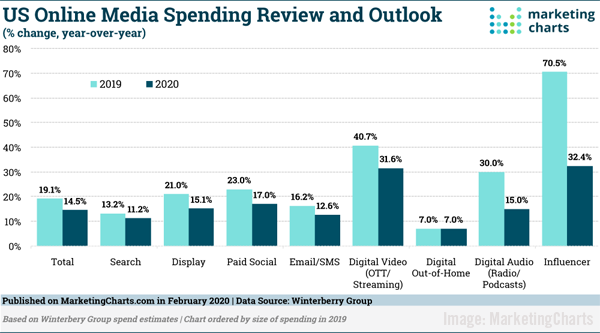



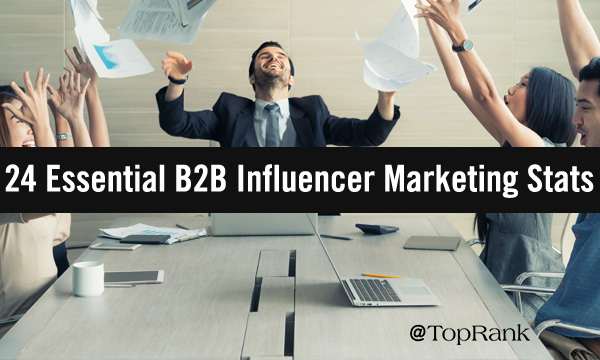

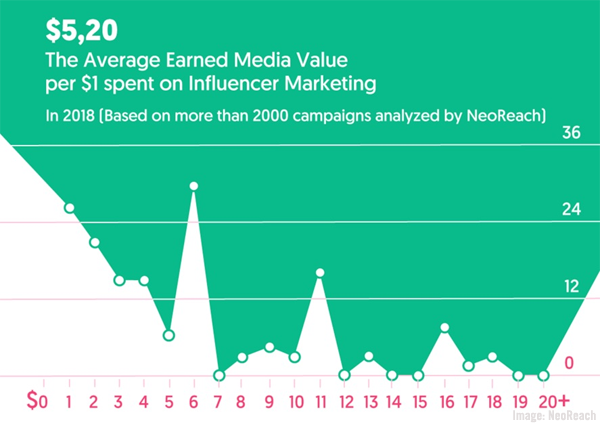



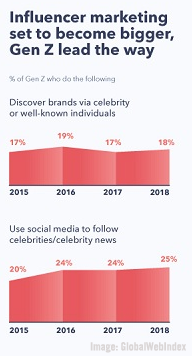
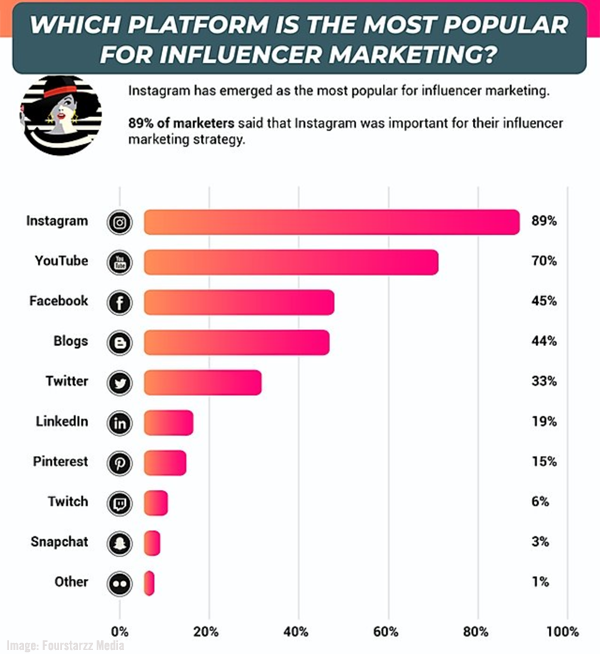

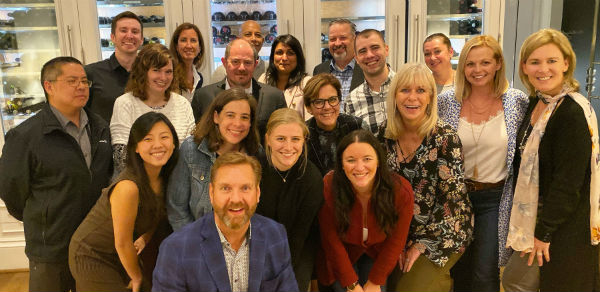
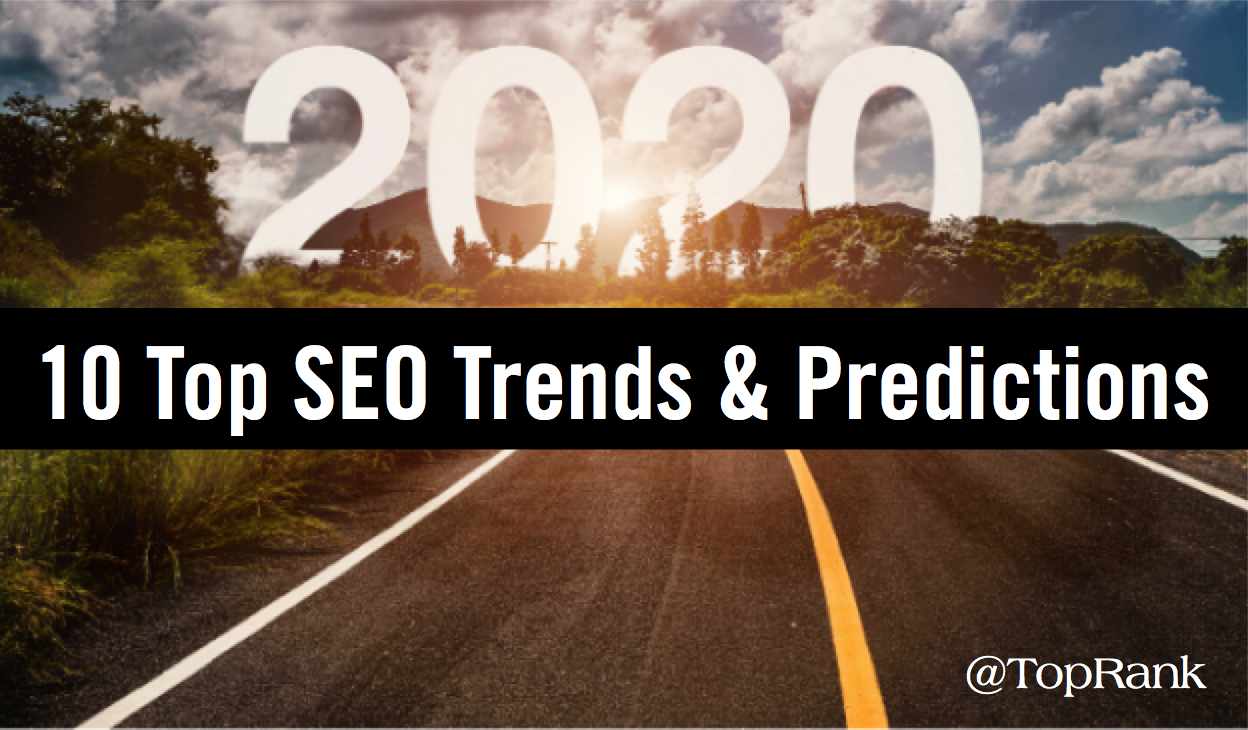











3/4/2020
1 Comment